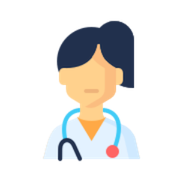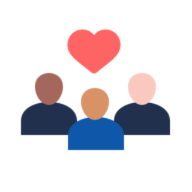
Powered By





 Continue with Facebook
Sign up with your email
Continue with Facebook
Sign up with your email
Cortisol is a hormone that helps control many important functions in the body. People living with congenital adrenal hyperplasia (CAH) may have lower-than-normal cortisol levels, depending on their type of CAH.
This article will explain what cortisol does, how different types of CAH affect cortisol levels, and what treatments are available.
Cortisol is a type of steroid hormone called a glucocorticoid. It’s made by the adrenal glands. These two small glands are on top of the kidneys. Inside these glands, special proteins called enzymes — specifically 21-hydroxylase — help produce cortisol.
Most tissues in the body respond to cortisol, which helps regulate several important functions, including:
Cortisol imbalance, which means having either too much or too little of the hormone, can cause problems in many parts of the body.
Most people with CAH don’t have enough 21-hydroxylase activity, which is why CAH is often called 21-hydroxylase deficiency.
The main function of 21-hydroxylase is to help make cortisol and another hormone called aldosterone. If 21-hydroxylase is missing or not working properly, the body makes less cortisol and sometimes less aldosterone. The effect on cortisol levels depends on the type of CAH a person has.
In classic CAH, changes in the gene that provides instructions for making 21-hydroxylase result in an enzyme that doesn’t work or works poorly. As a result, the adrenal glands don’t make enough cortisol to meet the body’s needs.
Most of the time, when 21-hydroxylase doesn’t work, the body also can’t make enough aldosterone. This hormone helps control salt levels in the blood. Without it, too much salt is lost through urine. That’s why this form of CAH is called salt-wasting CAH.
Some people with classic CAH still have a little working 21-hydroxylase. Their adrenal glands can make aldosterone, the salt-retaining hormone, but still make very little cortisol. This form of classic CAH is called simple-virilizing CAH, and it still carries a risk for adrenal crisis (an emergency we’ll discuss later).
In nonclassic CAH, changes in the gene for 21-hydroxylase lead to the body making a smaller amount of working enzyme. However, most people with nonclassic CAH still have between 20 percent and 60 percent of normal enzyme activity, so their cortisol levels are usually similar to those of people without CAH. The majority of these people still make enough cortisol for everyday life.
About 95 percent of people with CAH have a defect in the 21-hydroxylase enzyme, but other rare forms exist where variants in different genes encoding other adrenal gland enzymes can also affect cortisol levels.
For example, a deficiency in 11-beta-hydroxylase, another enzyme involved in making cortisol and breaking down deoxycorticosterone, a mineralocorticoid hormone that helps control salt and water balance, can lead to low cortisol levels.
Other enzymes that help make cortisol include 3-beta-hydroxysteroid dehydrogenase, 17-hydroxylase, and the cholesterol side chain cleavage enzyme. People with CAH caused by a deficiency in these other enzymes may also have trouble making enough cortisol.
Common symptoms of low cortisol levels include:
The most serious complication of low cortisol levels is an adrenal crisis, a life-threatening emergency that requires immediate treatment. Cortisol regulates vital functions like blood pressure and circulation, especially during illness or stress. Too little cortisol can reduce blood flow, causing a dangerous drop in blood pressure and possible organ failure. Symptoms of an adrenal crisis include:
An adrenal crisis can happen if CAH is not properly treated. Physical stress, such as illness, surgery, or injury, is the most common trigger. Strong emotional stress (like grief or extreme worry) has been reported to possibly play a role, but the connection isn’t as well established as it is for physical stressors.
Low cortisol levels can also be caused by Addison’s disease, when the immune system attacks the adrenal glands and reduces hormone production. In some countries, past tuberculosis infections can also damage the adrenal glands. Low cortisol levels are seen in both CAH and Addison’s disease. Doctors can tell the conditions apart through symptoms and medical tests.
CAH also affects other hormones made by the adrenal glands. When 21-hydroxylase doesn’t work properly, hormone building blocks that normally make cortisol and sex hormones (androgens) build up in the adrenal glands. Instead of turning into cortisol and sex hormones, these building blocks are made only into androgens. This causes high androgen levels in people with CAH.
Cleveland Clinic explains that in classic CAH, a 21-hydroxylase deficiency can lead to low cortisol and aldosterone levels but higher-than-normal androgen levels, which may cause:
Infertility (trouble becoming pregnant)
In nonclassic CAH, cortisol levels may be normal. However, excess cortisol precursors — hormone building blocks that normally turn into cortisol — can still lead to high levels of androgens, such as testosterone. They can also raise levels of 17-hydroxyprogesterone, a hormone that can turn into androgens. These changes may lead to high androgen levels, similar to some seen in classic CAH but usually milder and less frequent. Many people may not notice symptoms until later in life. Symptoms may include:
Cortisol levels can be measured with a blood test, a urine test, or even in the saliva. Because cortisol levels naturally rise and fall throughout the day, testing is usually done in the morning, when levels should be at their highest. This helps doctors better understand whether the adrenal glands are working normally.
An adrenocorticotropic hormone (ACTH) stimulation test checks how well the adrenal glands produce cortisol when stimulated. ACTH is a hormone from the pituitary gland that signals the adrenal glands to make more cortisol. During this test, doctors measure cortisol and 17-hydroxyprogesterone, a cortisol precursor, after injecting ACTH. In people with CAH, cortisol levels remain low, while 17-hydroxyprogesterone rises quickly, helping doctors diagnose CAH.
In countries with newborn screening for CAH, doctors screen for the classic form of the condition by measuring blood levels of 17-hydroxyprogesterone. This substance is necessary for making cortisol, but it builds up when 21-hydroxylase doesn’t function properly. In healthy newborns, 17-hydroxyprogesterone is high at birth but decreases quickly. However, in babies with CAH, this substance stays high.
One goal of treating CAH is to prevent problems from low cortisol, such as an adrenal crisis. Treatment also aims to replace missing hormones and lower excess androgens to keep hormone levels in balance. The type of treatment depends on the type of CAH and how severe the symptoms are. A team of healthcare providers and specialists is typically involved in finding the best treatment plan for an individual’s needs.
People with classic CAH need daily glucocorticoid medication to replace cortisol because they don’t make enough on their own. The most common medication for this is hydrocortisone. This treatment not only helps the body manage stress but also helps reduce androgen levels. Newer medicines are also being studied that work with steroids to lower brain signals that drive high androgen levels. These may allow people to take lower doses of hydrocortisone to manage their CAH.
In classic CAH, glucocorticoid treatment usually begins soon after birth and continues for life. Because cortisol is key to helping the body handle stress, the glucocorticoid dose may need to be adjusted when the body is stressed, such as during illness.
Many people with nonclassic CAH don’t need daily steroid treatment if they have no or mild symptoms. A small number of people may need medicine if symptoms get worse. Treatment might also be needed during major illness or surgery or if tests show people don’t make enough cortisol under stress.
Additional CAH treatments may be needed depending on symptoms. For example, people with salt-wasting classic CAH need mineralocorticoid medications to help balance sodium and fluid levels. Infants with salt-wasting classic CAH need additional salt.
Each person’s treatment plan is unique, and regular checkups with doctors help make sure medications are working properly. With the right care, people with CAH can lead healthy, active lives. Ongoing research is also improving treatment options, giving people with CAH and their families more ways to care for the condition and plan for the future.
On CAHteam, people share their experiences with congenital adrenal hyperplasia, get advice, and find support from others who understand.
How has CAH affected your cortisol levels, and what treatments have helped balance them? Post your tips in the comments below.
Get updates directly to your inbox.



 Continue with Facebook
Sign up with your email
Continue with Facebook
Sign up with your email
Become a member to get even more




A CAHteam Visitor
I was tested at the Medical College of Ga. My sex organs seem normal
But I had a high level of androgens WTH hair on chin st she. 15. Dr . Greenblatt gave meets of something in my stomach. At age 20… read more
We'd love to hear from you! Please share your name and email to post and read comments.
You'll also get the latest articles directly to your inbox.